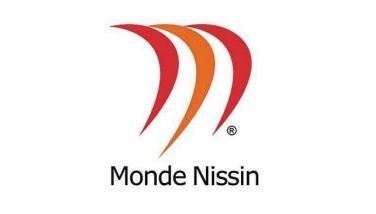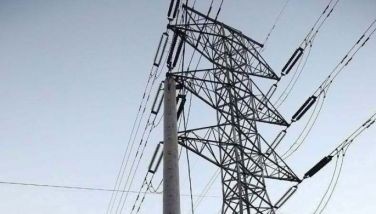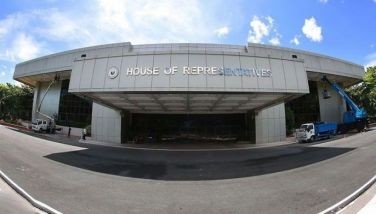APEC economies at a crossroads
(Dr. Alan Bollard is the Executive director of the APEC Secretariat)
MANILA, Philippines - Global prosperity in the 21st century will be increasingly shaped by the capacity of the rapidly transforming Asia-Pacific to ensure next generation growth, facilitated by the integration of its economies that is today headed towards new and encouraging frontiers. The region’s leaders convened this week in Manila to chart the next step, undeterred by the shadow of terrorist attacks that seek to corrupt these forces.
The 21 Asia-Pacific Economic Cooperation member economies they captain – home to three billion people and encircling the world’s largest ocean but varying greatly in size, development and political and cultural orientation – are the forefront of the region’s integration movement. They exemplify the enduring power and potential of working together to build open, interconnected markets.
In just 25 years, joint efforts in APEC to lower tariffs and barriers to the passage of people, goods and capital at borders have boosted trade and growth among economies ranging from the very big in the United States, China and Japan, to the small and advanced such as New Zealand and Singapore, to the emerging like Peru, Papua New Guinea and Vietnam.
Spurred by the advantages of greater open integration, APEC members nowadays account for about half of global trade, 60 percent of total gross domestic product and much of the world’s growth. Out of these dynamics, hundreds of millions of people have moreover been lifted out of poverty and into the ranks of the middle class – arguably the most significant economic success in history!
Such progress has created enormous opportunity for businesses to sell their goods and services to a new generation of consumers in the Pacific Rim. It is in turn driving APEC members to push for new, increasingly large trade agreements such as the Trans Pacific Partnership, Regional Comprehensive Economic Partnership and Pacific Alliance, and the ultimate establishment of an APEC-wide Free Trade Area of the Asia-Pacific or FTAAP that builds off of them.
The slowdown in trade growth that has put Asia-Pacific economies on a lower growth trajectory of late has added to the fervor of this pursuit. Yet there is no guarantee that a trade-driven growth formula will work for the future without adapting to the changing times. This means addressing middle and high income economy challenges that have sharply come to the fore, inequality being high among them.
The record of trade agreements on this issue is not so impressive. Though equality between economies is much improved, within economies there are significant groups who have benefited fairly little from globalization.
Positioning small businesses to play a greater role in cross-border production and supply chains could do a lot to widen the fold. Collectively, small and medium enterprises account for over 97 percent of all firms and more than half of employment in APEC economies but a low proportion of their exports – less than 25 percent in Indonesia, Japan, Malaysia, Singapore, Chinese Taipei and the United States, and below 15 percent in Australia, Chile and Peru.
Here and now there are substantial opportunities for small businesses to partner with larger companies in the conception, design, production, marketing, distribution and sale of value added products—from blue jeans to commercial jets. Ensuring that small firms know where they exist, how to take advantage of them and have access to capital needed to proceed is key and a deepening focus of collaboration between APEC members and the private sector.
At the same time, people in the region must be sufficiently empowered to take advantage of new economic opportunities. This means strengthening human capital development so that labor forces are compatible with the needs of 21st century economies.
Examples include work in APEC to make it easier to pursue education and skills training abroad like the creation of new scholarships and internships and the targeting of one million university student exchanges in the region annually by 2020—25 per cent higher than current levels. The promotion of startups and women’s entrepreneurship through mentoring, social support mechanisms and e-channel growth, as well as enhanced mobility for people to legitimately cross borders – building on the APEC Business Travel Card program – is an additional agenda focus.
There is also the need to bolster physical linkages across the regional economy, particularly in emerging markets where rapid change, including rising urbanization, are set to continue over the coming decades. Bridging infrastructure gaps is a major point of attention in APEC, with emphasis on the facilitation of public-private partnerships or PPPs to help meet the nearly $10 trillion in required project investment just in the next decade.
This includes roads, rail, ports and airports along with sustainable power generation, water and waste management, and digital networks to accommodate the region’s next phase of growth and development. Parallel work in APEC to improve access to environmental goods like solar panels and wind turbines through tariff cuts and support their market-based deployment is also part of the equation and can help to protect the environment and fight climate change while creating jobs and growth.
Strengthening resilience against the increasing threat of natural disasters due to climate change, food security, protection against pandemics and indeed counter-terrorism, as well as structural reforms to steer economies more effectively, is further crucial to mitigating the shifting risk calculus and potential for new shocks within the system.
The inclusive economies theme set by the Philippines as APEC Chair in 2015 and embraced by members reflects these priorities. Actions being taken under them will need to be built upon this week and in the years to come to ensure the Asia-Pacific can continue to lead the world in economic advancement in an increasingly challenging landscape and in ways that can make life better for all.
- Latest
- Trending





























